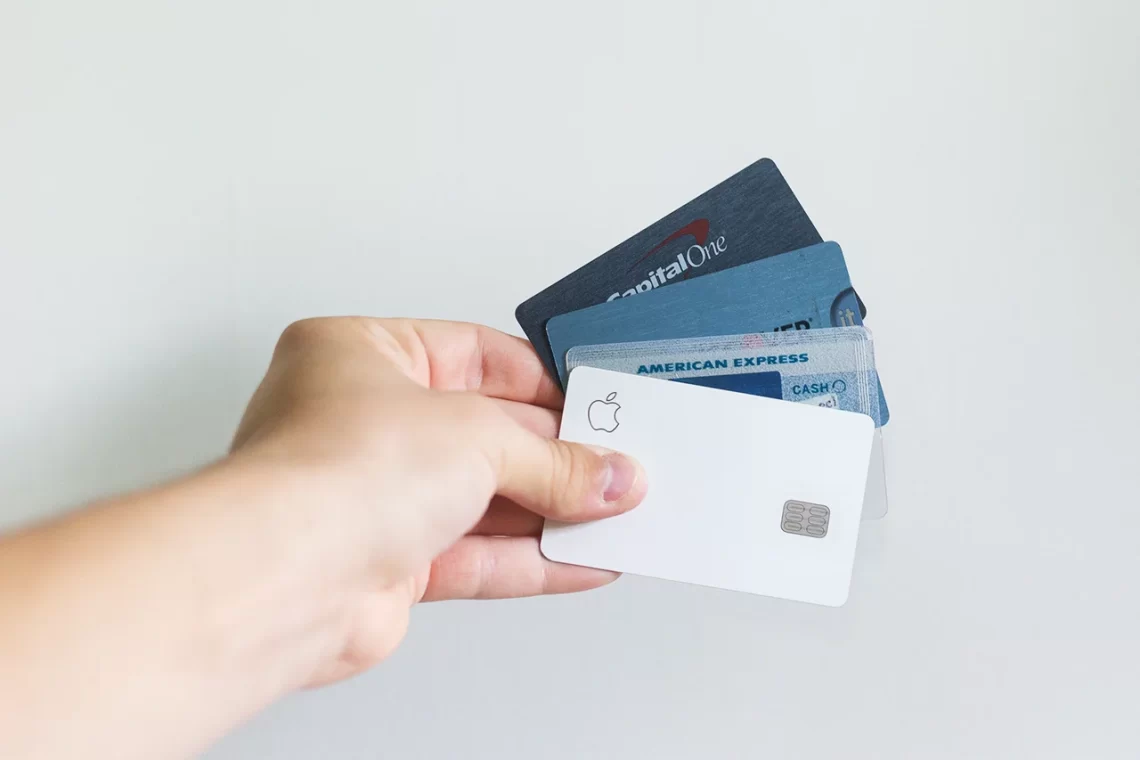
Building Credit from Scratch: A Comprehensive Guide
If you are just starting on your credit journey or are just beginning to rebuild after a setback, laying a strong foundation is crucial. One of the first steps towards building credit responsibly is obtaining a secured credit card. This article will guide you through the process, providing comprehensive tips for starting from scratch and ensuring that you avoid accumulating debt by paying off your credit card balance promptly.
Step 1: Obtain a Secured Credit Card
When you have little to no credit history, getting approved for a traditional credit card can be challenging. A secured credit card is an excellent starting point, especially for those looking to establish or rebuild credit.
What are Secured Credit Cards?
Secured credit cards are designed specifically for individuals with little to no credit history or those seeking to rebuild their credit. Unlike regular credit cards, secured cards require a cash deposit as collateral, which acts as security for the credit card company. This deposit determines your credit limit, and it’s usually equal to the deposited amount.
Key Features of Secured Credit Cards
Before obtaining a secured credit card, it’s essential to understand the key features that may impact your credit-building journey:
- Cash Deposit: As mentioned earlier, the cash deposit you provide determines your credit limit. For instance, if you deposited $500, your credit limit would likely be around $500. This collateral reduces the risk for the credit card company and allows you to access credit even without a credit history.
- APR Rates: APR (Annual Percentage Rate) represents the interest you’ll be charged if you carry a balance on your credit card from month to month. Secured credit cards may have higher APR rates compared to regular credit cards, so it’s crucial to pay off your balance in full each month to avoid interest charges.
- Annual Fees: Some secured credit cards may have annual fees to maintain your account. While these fees can vary, there are options available with no annual fees, so be sure to compare offers before choosing a card.
- Credit Reporting: To build credit effectively, you need a secured credit card that reports your payment history to the major credit bureaus (Equifax, Experian, and TransUnion). This reporting allows you to establish a positive credit history as you make timely payments.
Tips for Choosing a Secured Credit Card
When selecting a secured credit card, consider the following tips to make the most of your credit-building journey:
- Cash Deposit: Look for a card with a reasonable cash deposit requirement that fits your budget.
- Annual Percentage Rate (APR): When selecting a secured credit card, it’s essential to compare APR rates since they can vary widely, with many cards having rates of 26% or higher. However, if you commit to paying your full balance at the end of each month, the APR becomes less of a concern. Still, it’s a prudent practice to opt for a card with a lower rate if possible. This way, you’ll have added peace of mind and potentially save on interest costs if you ever need to carry a balance in the future.
- Annual Fee: Prioritize cards with no or low annual fees to minimize costs.
- Credit Bureau Reporting: Ensure the card issuer reports your responsible credit behavior to the credit bureaus to build credit history effectively. This reporting is a standard practice among all major secured card issuers and is essential for establishing a positive credit history.
- Online Account Access: Make sure your card issuer offers convenient online account access, allowing you to manage your finances easily and make payments at any time. Most major card issuers should provide user-friendly online platforms, enabling you to stay in control of your credit card activities with just a few clicks. This online access ensures that you can efficiently track your spending, review statements, and make timely payments, contributing to a seamless credit-building experience.
Finding the Right Secured Credit Card: Resources to Kickstart Your Credit Journey
If you’re ready to embark on your credit-building journey with a secured credit card, we’ve compiled a list of reliable websites that can help you find the perfect card to suit your needs. These websites offer valuable insights, comparisons, and user reviews to guide you in making an informed decision, ensuring you start building credit responsibly on the right foot. Explore the following resources to find the secured credit card that best aligns with your financial goals and aspirations.
Step 2: How to Use a Secured Credit Card Responsibly
A secured credit card works similarly to a regular credit card, allowing you to make purchases up to your credit limit. However, the crucial difference lies in the cash deposit. Here’s how to use it responsibly to build credit effectively:
a. Only Spend What You Can Repay Immediately
The golden rule of using a credit card responsibly: never buy anything you can’t pay off immediately. Treat your secured credit card as a tool to build credit, not as a means to finance purchases beyond your means. Stick to a budget and use the card for small, manageable expenses, ensuring you have the cash readily available to cover your purchases. Remember, you should never talk yourself into buying something that you don’t currently have the cash for simply because you really want it. Doing so will lead you into a growing habit of carrying a larger and larger debt until you’ve gotten yourself into trouble and damage your already struggling credit score.
Think of your secured credit card like a debit card. You can’t buy things beyond your current balance. The only difference is that you need to consciously make the payment instead of the funds being automatically being deducted from your bank account. By adopting this mindset and diligently paying off your secured credit card balance in full and on time, you’ll avoid accumulating debt, safeguard your credit score, and pave the way for a brighter financial future. Responsible credit usage is the key to success, and with disciplined spending, you’ll confidently navigate your credit journey while building a strong credit profile that serves you well in the long run.
b. Pay Off Your Balance in Full Every Month
One of the most critical aspects of using a secured credit card responsibly is paying off your balance in full every month. Since secured credit cards may have higher APR rates, it’s essential to avoid carrying over any balance from one billing cycle to the next. This practice helps prevent unnecessary interest charges and keeps your credit utilization rate low (we’ll talk about that later in this article).
To ensure you don’t end up carrying a balance, you can even make it a habit to pay off the full balance of your last purchase as soon as it posts to your account. As mentioned previously, as you are building credit, never buy anything you can’t pay off immediately.
By adopting this prompt payment strategy, you reap several advantages:
- Easier Payment Management: Making multiple smaller payments throughout the month may be easier to manage for some people than having to pay a larger lump sum at the end of the billing cycle. This approach can help individuals stay on top of their finances and ensure timely payments, promoting responsible credit card usage and avoiding any potential financial strain.
- Avoiding APR Interest: Since the APR on secured credit cards can be relatively high, paying off your balance in full every month ensures you won’t incur any interest charges on carried-over balances.
- Staying Debt-Free: By paying off your balance immediately, you prevent the accumulation of debt, fostering a healthy credit management habit from the start.
- Building Positive Credit History: Consistently paying off your balance in full demonstrates financial responsibility to credit bureaus, which positively impacts your credit score and lays the groundwork for a strong credit history.
- Improving Creditworthiness: A solid credit history built on prompt payments increases your creditworthiness, potentially leading to better credit offers and rewards in the future.
c. Managing Credit Utilization Rate
Now that you understand the importance of paying off your balance in full every month with a secured credit card, let’s dive into another crucial aspect of responsible credit card usage: managing your Credit Utilization Rate.
Credit Utilization Rate refers to the percentage of your credit limit that you’ve used. It is calculated based on the balance reported to the credit bureaus at a specific time, typically around the statement closing date. To maintain a healthy credit utilization rate and showcase responsible credit management, aim to pay off your balance in full before the statement closing date. By doing so, the credit card company will report a $0 balance to the credit bureaus for that billing cycle, resulting in a 0% Credit Utilization Rate for that particular period.
Keeping your Credit Utilization Rate as low as possible is crucial for a positive credit score. While maintaining a utilization rate below 30% is considered responsible, the ultimate goal is to avoid carrying a balance altogether.
Maintaining a low Credit Utilization Rate is essential for those using secured credit cards to build or rebuild credit. A low utilization rate shows creditors that you’re managing your credit responsibly and not relying heavily on borrowed funds. This responsible credit behavior is a key factor in establishing and improving your creditworthiness.
- Keep Your Balances Low: Aim to keep your credit card balances well below your credit limit. If you have a $500 credit limit, try to keep your balance around $100-$150 or less. This low utilization rate demonstrates prudent credit management. Ideally, you don’t want any balance to carry over to the next month.
- Regularly Monitor Your Credit Card Balance: Stay vigilant about your credit card balance to avoid exceeding your target utilization rate. Monitoring your spending will help you maintain control over your credit usage.
- Pay Multiple Times a Month if Needed: With secured cards, you may have a smaller credit limit initially. To ensure you maintain a low utilization rate and never carry a balance, consider making multiple payments throughout the month. By doing so, you’ll proactively keep your credit card balance in check, avoiding any potential debt accumulation. This practice reinforces responsible credit management and aligns with your goal of never carrying a balance, setting you on the path to credit success.
Maintaining a low Credit Utilization Rate with your secured card showcases your financial discipline and responsible credit habits to potential lenders. As you consistently manage your card and demonstrate low credit utilization, your creditworthiness will grow, setting the stage for a successful transition to unsecured credit and a positive credit-building journey.
Step 3: Build Credit Gradually
Using your secured credit card responsibly over time is a key step towards establishing a positive credit history. Building credit takes time and consistency, but with diligent effort, you can significantly improve your credit score. Here’s what you need to know:
- Timely Payments: Making on-time payments is crucial for building credit. Payment history is one of the most significant factors influencing your credit score. Consistently paying your secured credit card balance on or before the due date demonstrates your reliability as a borrower.
- Low Credit Utilization Ratio: Maintaining a low credit utilization ratio is equally essential. As a general rule, aim to pay the entire balance of your bill each month. A lower utilization rate signifies responsible credit usage and can positively impact your credit score.
- Patience is Key: Building a significant credit score takes time. As you consistently practice responsible credit habits, your credit score will gradually improve. Patience is essential throughout this process, as positive changes may not happen overnight.
- Credit Score Improvement Timeline: Building up your credit score significantly typically takes around six months to a year or more, depending on individual circumstances. Consistent, responsible credit behavior is crucial during this period.
- Avoid Multiple Credit Applications: Applying for multiple credit cards or other forms of financing within a short period can lead to multiple hard inquiries on your credit report. Hard inquiries may temporarily lower your credit score. Instead, focus on managing your secured credit card responsibly and refrain from opening new accounts until your credit score improves.
- Monitor Your Credit Report: Regularly review your credit report for accuracy and to track your progress. You are entitled to a free credit report from each of the major credit bureaus (Equifax, Experian, and TransUnion) once a year. Checking your report allows you to identify any errors or issues that may be affecting your credit score.
- Monitor Your Credit Score for Free: Checking your credit score with free services like Capital One CreditWise, Credit Karma, and other similar platforms is a convenient and accessible way to monitor your credit health. These services provide you with regular updates on your credit score and credit report, allowing you to stay informed about any changes or potential issues. By using these free tools, you can gain valuable insights into your credit standing, track your credit-building progress, and identify opportunities for improvement—all without any cost or impact on your credit score.
- Credit Mix and Length of Credit History: Once your credit score has improved significantly, consider diversifying your credit mix over time. Having different types of credit, such as credit cards and installment loans, can positively impact your credit score. Additionally, the length of your credit history plays a role in your credit score. The longer you maintain responsible credit behavior, the more positively it affects your creditworthiness.
Remember, building credit is a gradual process, and responsible credit management is the key to success. By consistently making on-time payments, maintaining a low credit utilization ratio, and practicing patience, you can significantly improve your credit score and achieve your financial goals.
Step 4: Transitioning to an Unsecured Credit Card
As your creditworthiness grows, you may become eligible for an unsecured credit card—the type of credit card most people are familiar with. Unsecured credit cards do not require a cash deposit and may offer better rewards and benefits. After responsibly managing your secured credit card for a period (typically 6-12 months), contact your card issuer to inquire about transitioning to an unsecured card.
Step 5: Continue Building Credit Responsibly
Once you’ve successfully transitioned to an unsecured credit card, the same rules of responsible credit management apply: spend within your means and continue to pay off your balance in full every month. By maintaining these habits, you can further enhance your credit score and financial standing, setting yourself up for even greater financial opportunities in the future.
As you continue to use your unsecured credit card responsibly, your creditworthiness will strengthen, and your credit score will improve. This positive credit history will be especially beneficial when the time comes to make significant purchases, such as buying a car. With a strong credit profile, you increase your chances of obtaining a favorable APR (Annual Percentage Rate) on auto loans, potentially saving you money and making your dream car more affordable.
Consistency in managing your credit is the key to unlocking these advantages and enjoying the benefits of an improved credit profile. So, stay disciplined in your credit habits, and the rewards of a robust credit score will pave the way to a brighter financial future.
Other Credit-Building Tools
While secured credit cards are a powerful tool for building credit from scratch, there are other credit-building tools and strategies that can complement your efforts. These tools can provide additional avenues to enhance your credit score and establish a robust credit history. Here are some essential credit-building tools to consider:
- Credit Builder Loans: Credit builder loans are designed specifically to help individuals build credit. Unlike traditional loans, the borrowed funds are held in a savings account or certificate of deposit (CD) as collateral. As you make regular, on-time payments, the lender reports your positive payment history to the credit bureaus, contributing to your credit score. Once the loan is fully repaid, you gain access to the deposited funds, and your credit history benefits from the improved payment record.
- Secured Personal Loans: Similar to secured credit cards, secured personal loans require collateral, such as a savings account or a valuable asset. By responsibly managing the loan and making timely payments, you demonstrate creditworthiness and establish a positive credit history.
- Authorized User Status: If you have a family member or friend with an established credit card account, you can ask to be added as an authorized user. Being an authorized user allows you to benefit from their positive payment history and credit utilization, which can boost your own credit score. However, it’s important to recognize that a lot of trust is involved on both sides in this arrangement.
As an authorized user, you don’t necessarily need your own credit card on the account. Your best course of action is to have no contact with their account other than being an authorized user. This way, you can’t make a mistake that negatively impacts their credit and your relationship with the cardholder. Before proceeding, ensure that the primary cardholder has a good credit history and responsible financial habits, as any negative actions on their part could also affect your credit score. By proceeding with caution and maintaining clear boundaries, being an authorized user can be a helpful strategy for boosting your credit score.
While being an authorized user can be beneficial for credit-building, it is still essential to practice responsible credit management on your own accounts and maintain open communication with the primary cardholder to ensure both parties understand the potential implications of this arrangement. - Credit-Builder Credit Cards: Some financial institutions offer credit-builder credit cards, which are distinct from regular secured credit cards. These cards may not require a cash deposit but typically have lower credit limits and higher APR rates. Like secured credit cards, responsible usage and on-time payments can help improve your credit score over time.
- Experian Boost and Other Credit-Boosting Services: Some credit bureaus and financial platforms offer services like Experian Boost, which allows you to add positive payment history for utility bills and other expenses that are not traditionally reported to credit bureaus. This additional data can potentially boost your credit score.
- Peer-to-Peer Lending Platforms: Peer-to-peer lending platforms enable individuals to borrow money from private investors. These loans can be reported to credit bureaus, and timely repayments contribute positively to your credit history.
Remember, while utilizing these credit-building tools, the key is to maintain responsible financial habits, make timely payments, and avoid taking on more debt than you can manage. Combining these tools with the disciplined use of secured credit cards can accelerate your credit-building journey and lead to a stronger credit profile in the long run.
Wrapping It All Up
Starting your credit journey with a secured credit card is an excellent way to establish a strong foundation and build credit responsibly. By adhering to the principles of spending only what you can repay immediately and paying off your balance in full each month, you’ll avoid debt traps and make significant strides towards an impressive credit profile. Remember, the key to success lies in patience, discipline, and prudent credit management as you elevate your financial persona with each step of your credit-building journey.




